Abstract
Cultural monitoring was used to determine the incidence and sources of salmonellae in a 4160-bird broiler flock raised on litter in 32 pens. Twenty-five of the pens remained apparently free of salmonellae during the 49-day growing period. Salmonella johannesburg, first detected in the meat meal component of the starter ration, was recovered from the litter of seven pens and from the intestines of dead or culled chicks from two pens. Salmonella alachua was also recovered from two of these pens. Culture of swabs collected from the plastic crates used to transport this flock for processing showed that 97/112 (86.6%) were contaminated with salmonellae (15 serovars) before the birds were loaded. The crate washer at the plant did not remove salmonellae from these crates: 97/132 (73.5%) crates sampled after washing yielded salmonellae. Eleven serovar were recovered, including S. johannesburg and S. alachua introduced by the infected flock. Twelve of 31 chickens (38.7%) collected when the birds were unloaded at the processing plant were intestinal carriers of S. johannesburg and/or S. alachua and 29 (93.5%) were external carriers. Salmonella johannesburg, S. alachua and four other serovars were isolated from the feathers of these birds. Eleven of 25 (44%) carcasses tested from this flock yielded salmonellae. Salmonella johannesburg or S. alachua, first isolated from the infected flock, were recovered from five carcasses and S. haardt and S. Typhimurium, first isolated from the transport crates were recovered from six carcasses.
Full text
PDF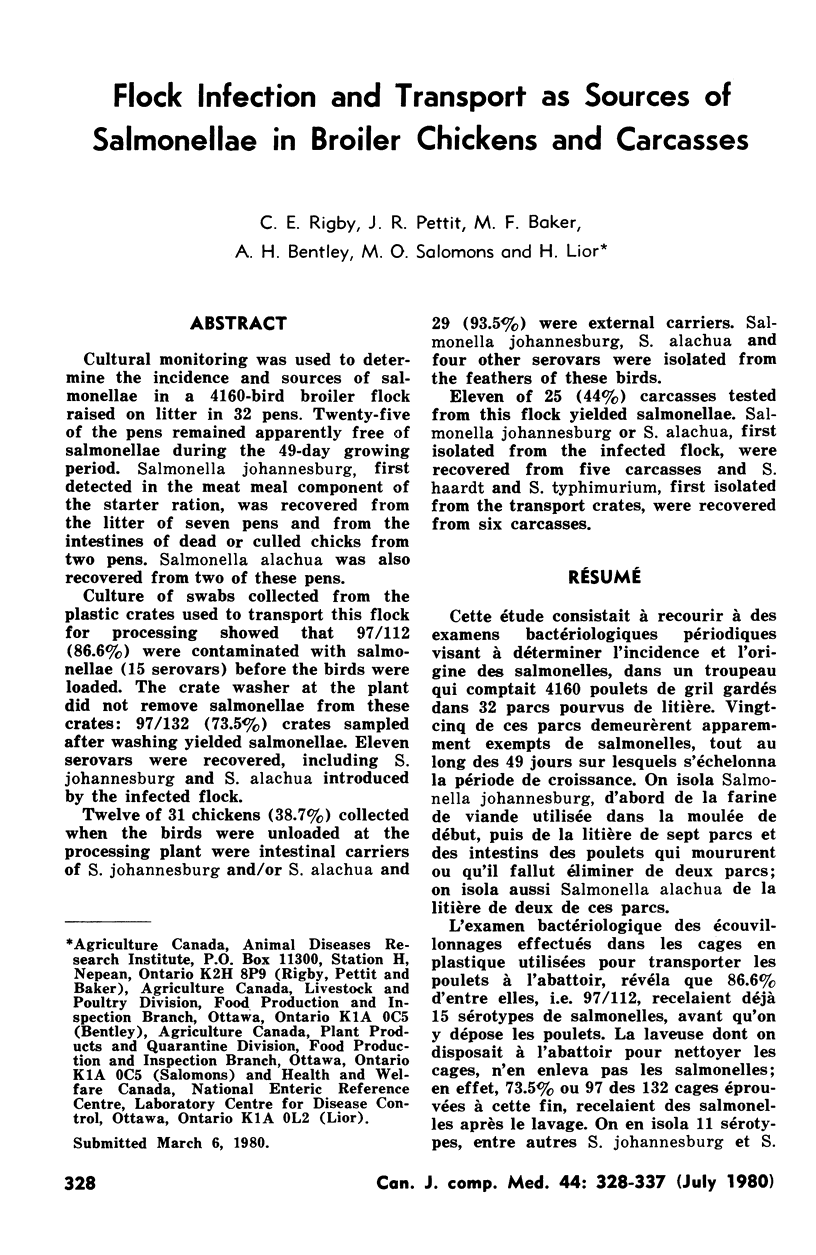
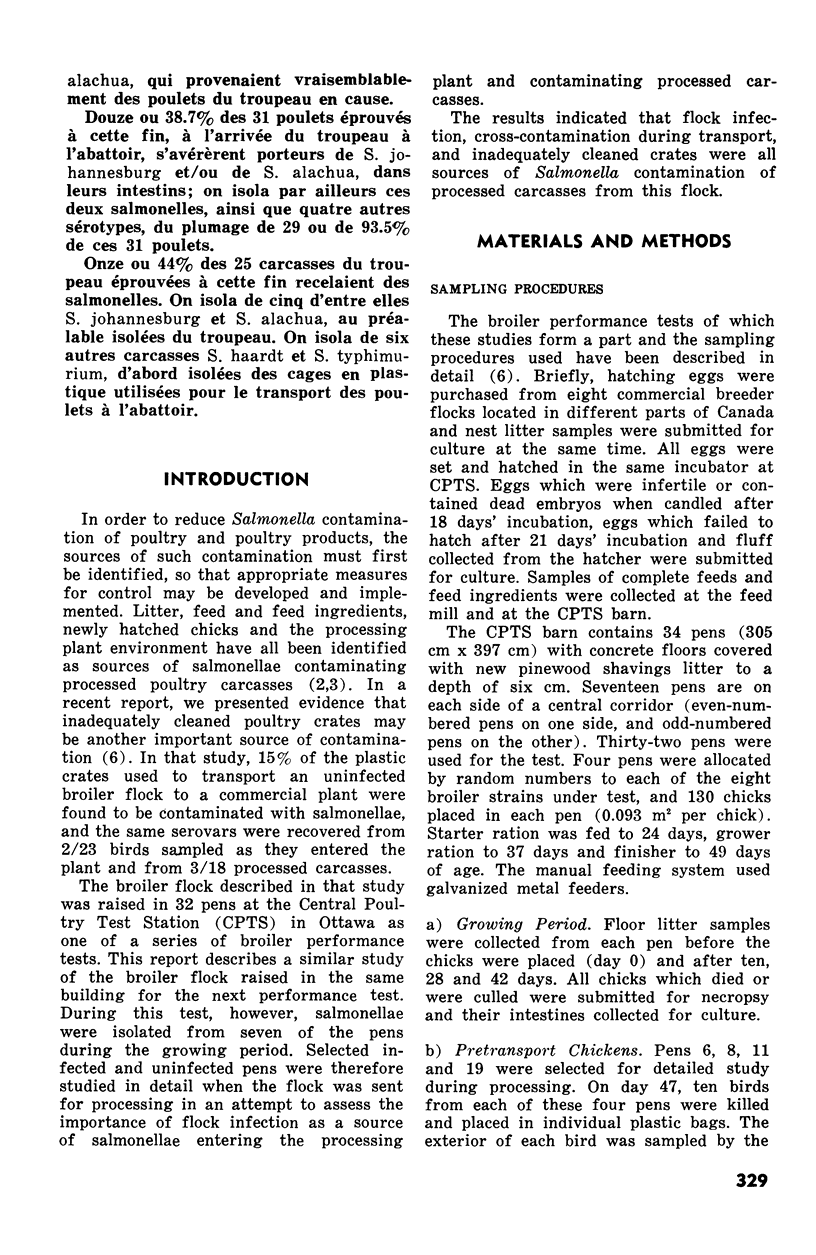
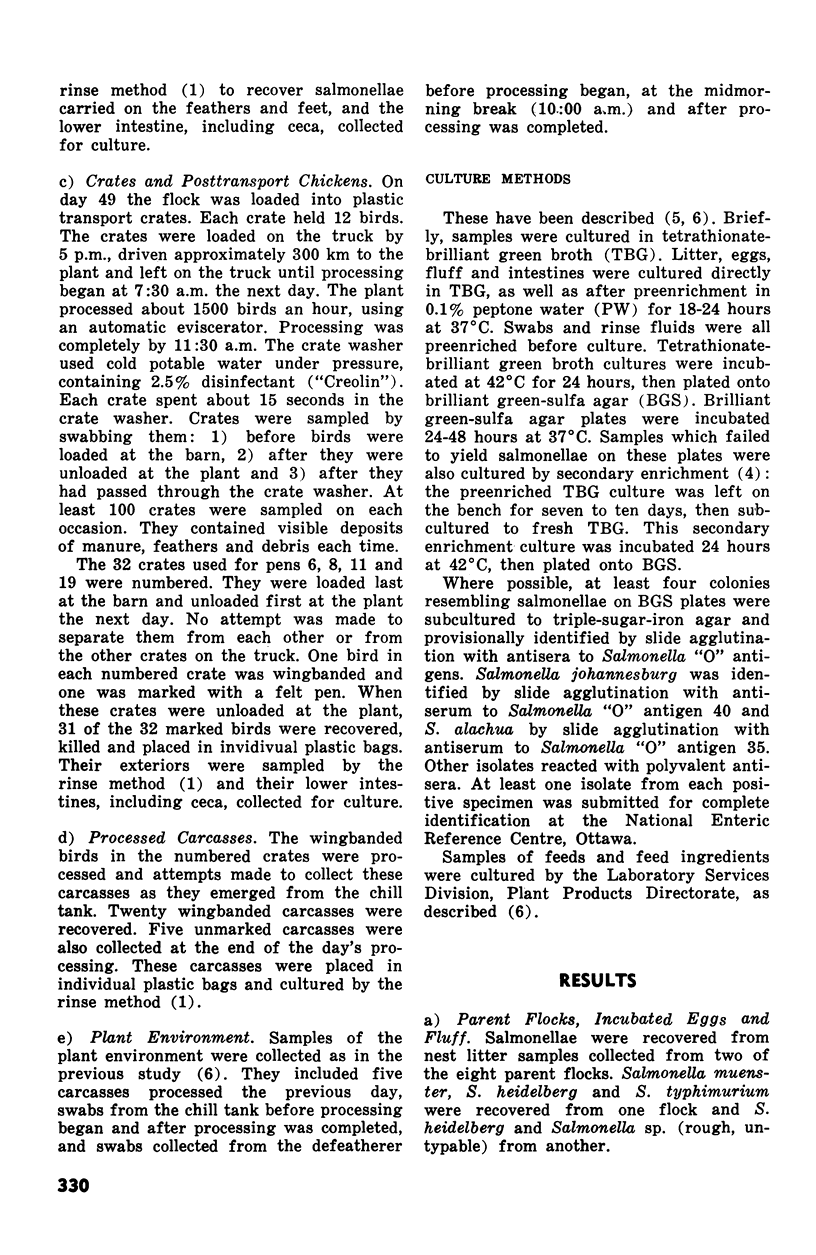
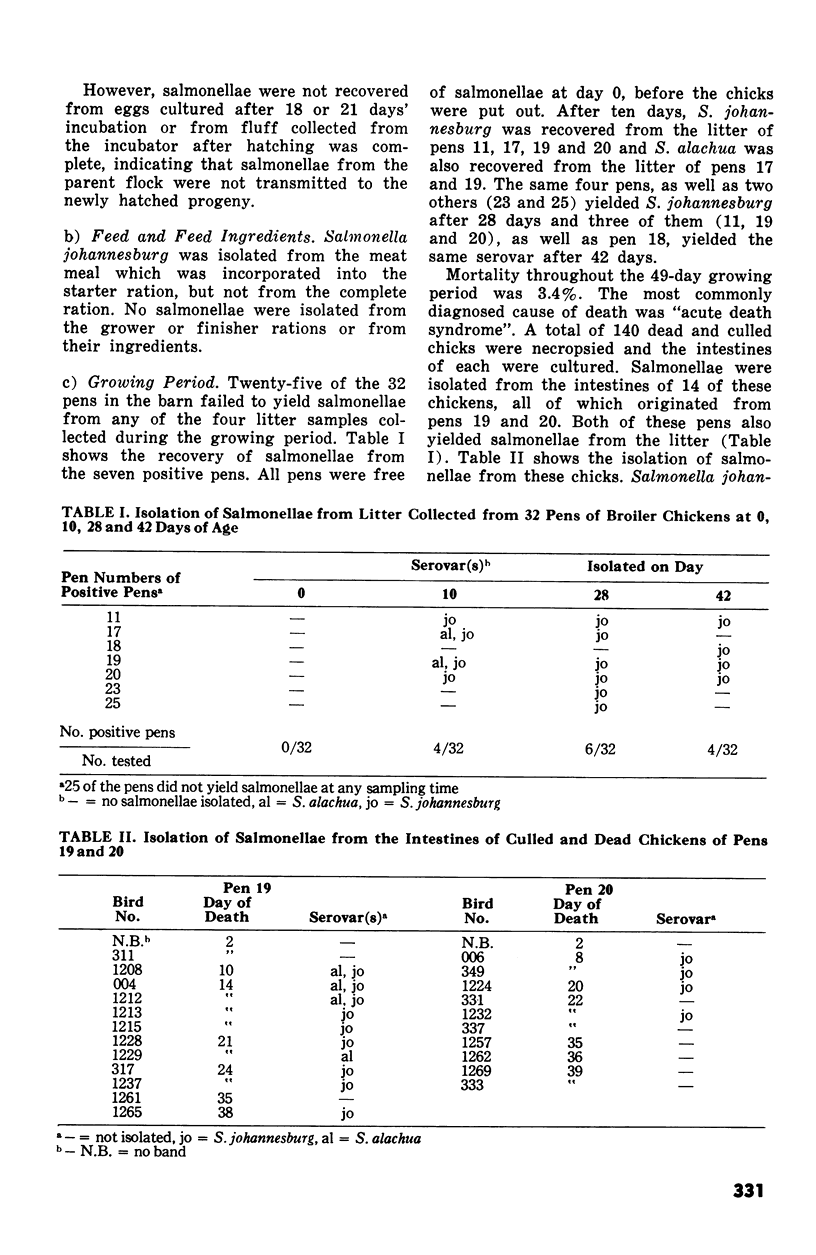

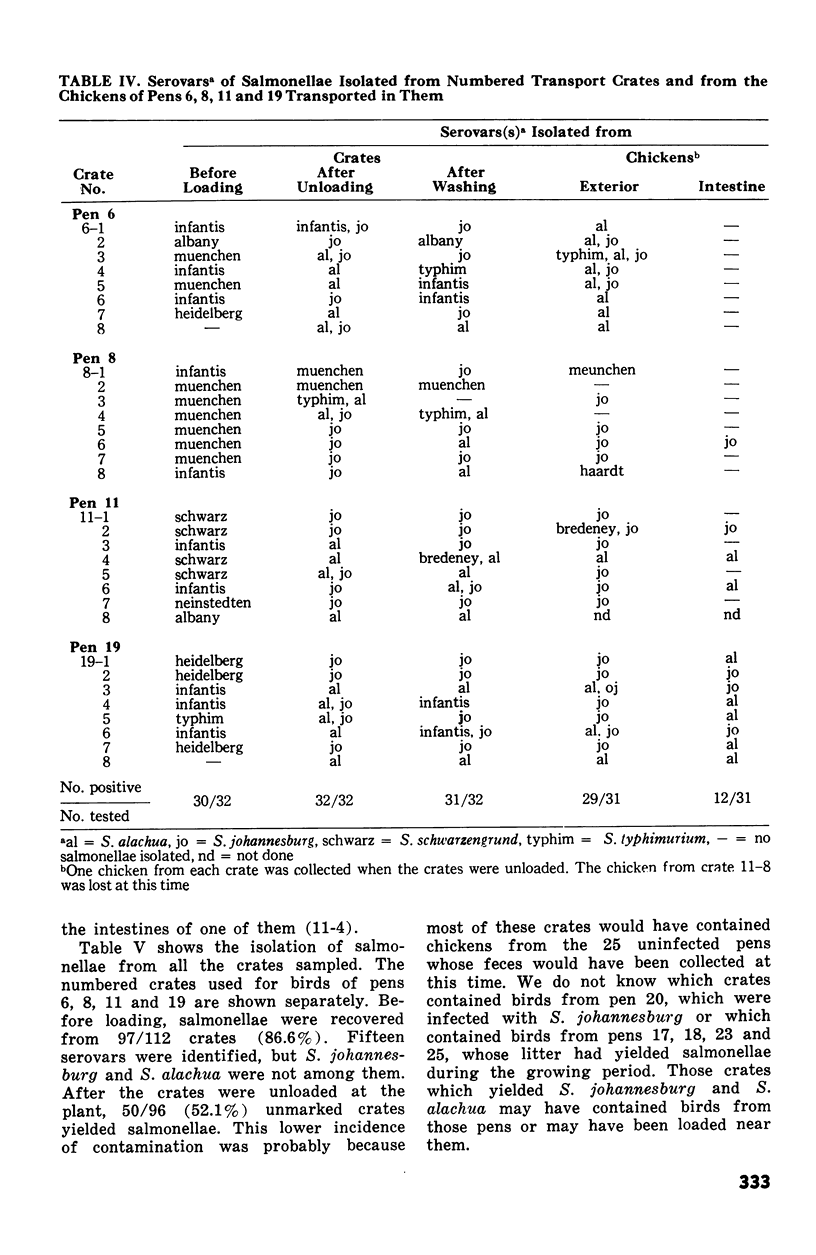
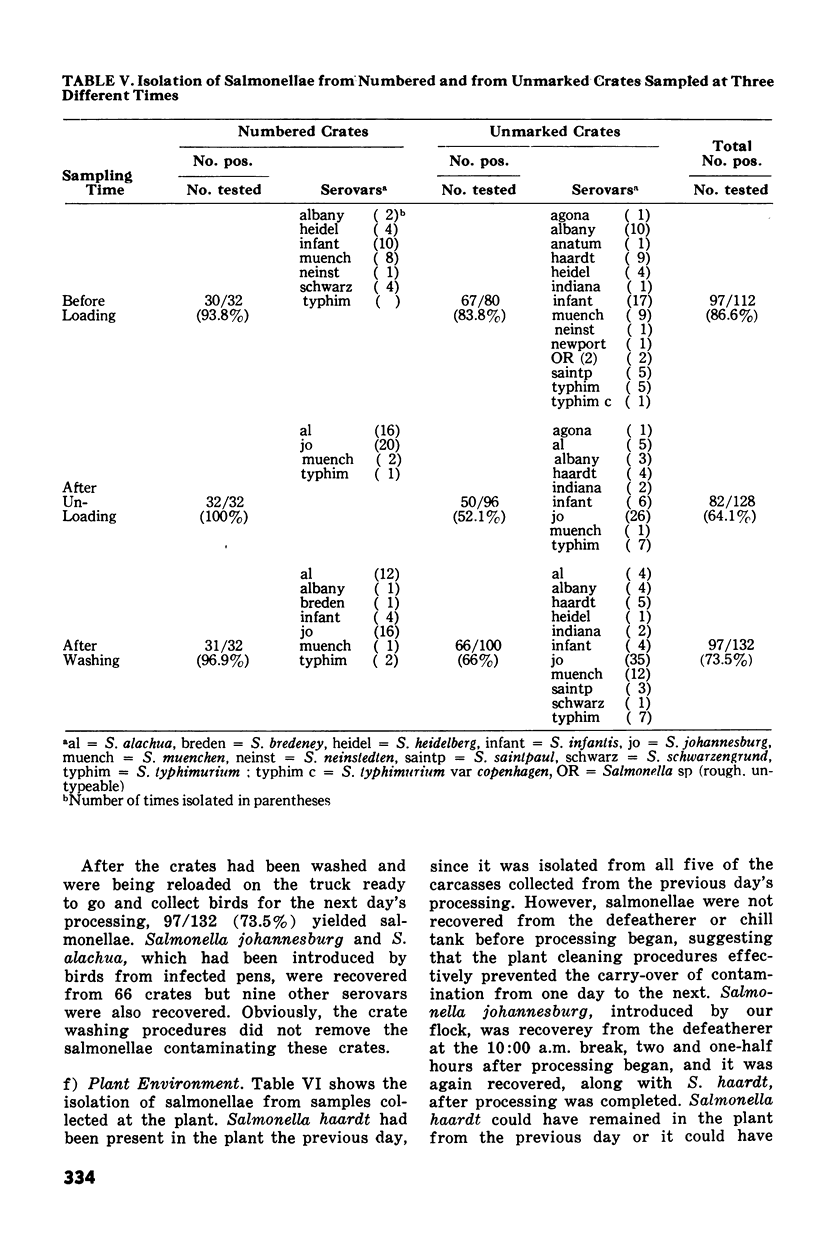

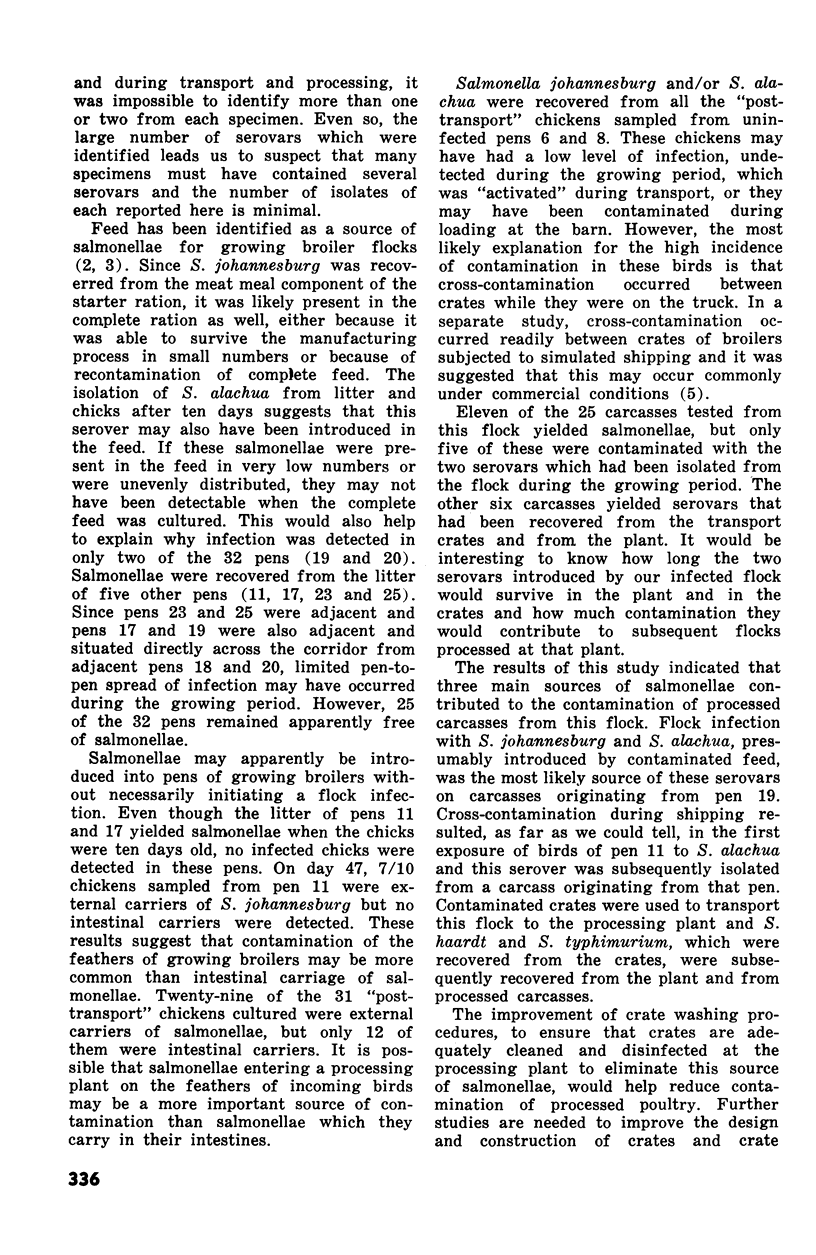
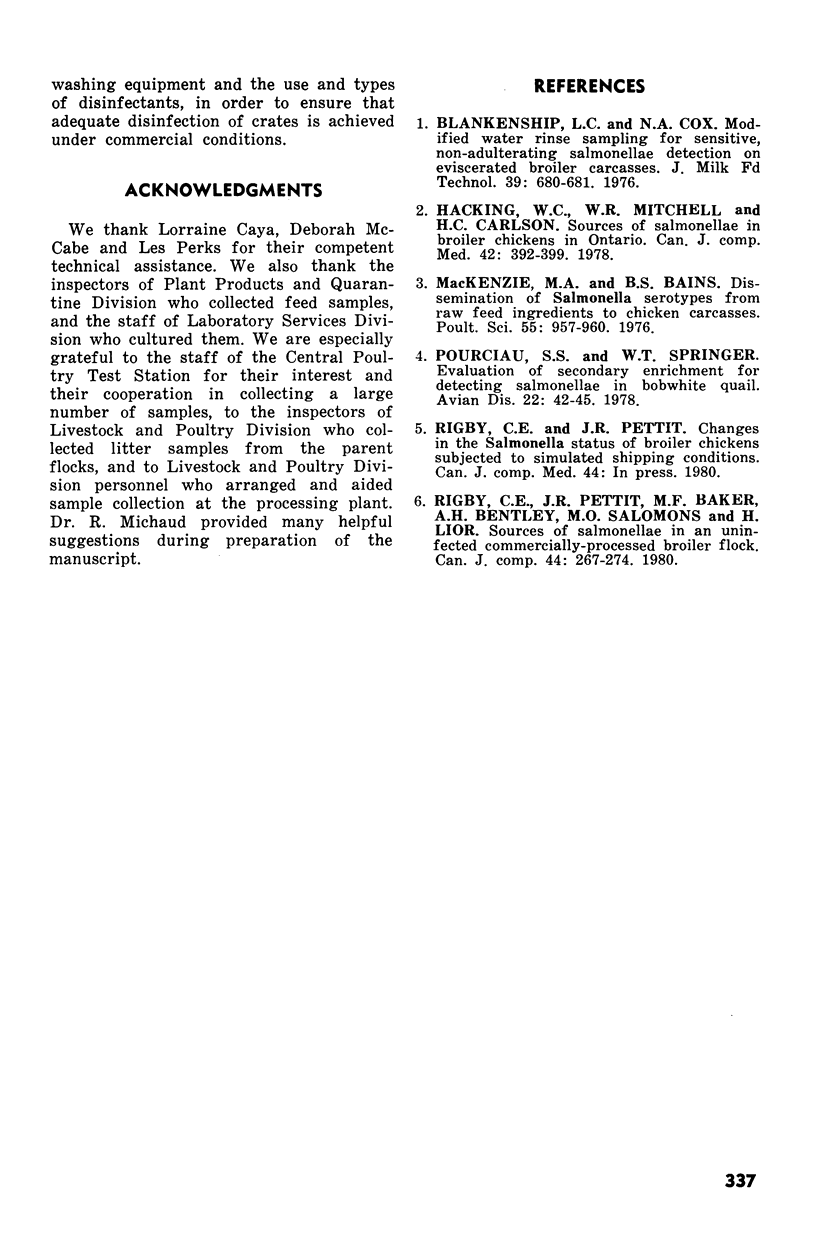
Selected References
These references are in PubMed. This may not be the complete list of references from this article.
- Hacking W. C., Mitchell W. R., Carlson H. C. Sources of Salmonellae in broiler chickens in Ontario. Can J Comp Med. 1978 Oct;42(4):392–399. [PMC free article] [PubMed] [Google Scholar]
- MacKenzie M. A., Bains B. S. Dissemination of Salmonella serotypes from raw feed ingredients to chicken carcases. Poult Sci. 1976 May;55(3):957–960. doi: 10.3382/ps.0550957. [DOI] [PubMed] [Google Scholar]
- Pourciau S. S., Springer W. T. Evaluation of secondary enrichment for detecting Salmonellae in bobwhite quail. Avian Dis. 1978 Jan-Mar;22(1):42–45. [PubMed] [Google Scholar]
- Rigby C. E., Pettit J. R., Baker M. F., Bentley A. H., Salomons M. O., Lior H. Sources of salmonellae in an uninfected commercially-processed broiler flock. Can J Comp Med. 1980 Jul;44(3):267–274. [PMC free article] [PubMed] [Google Scholar]


